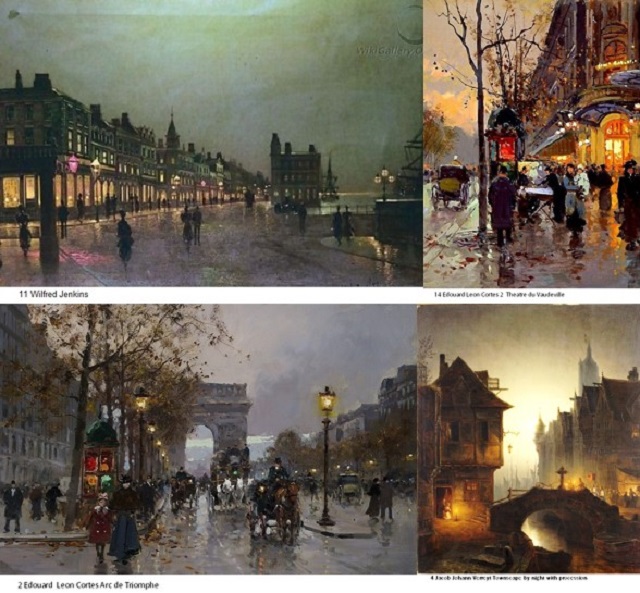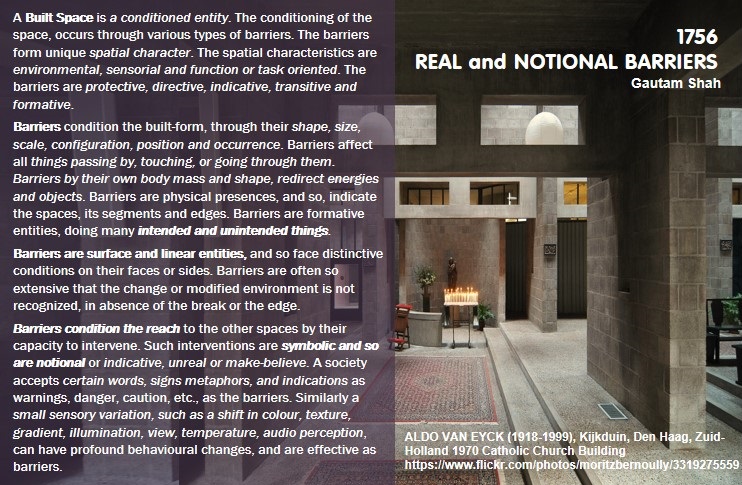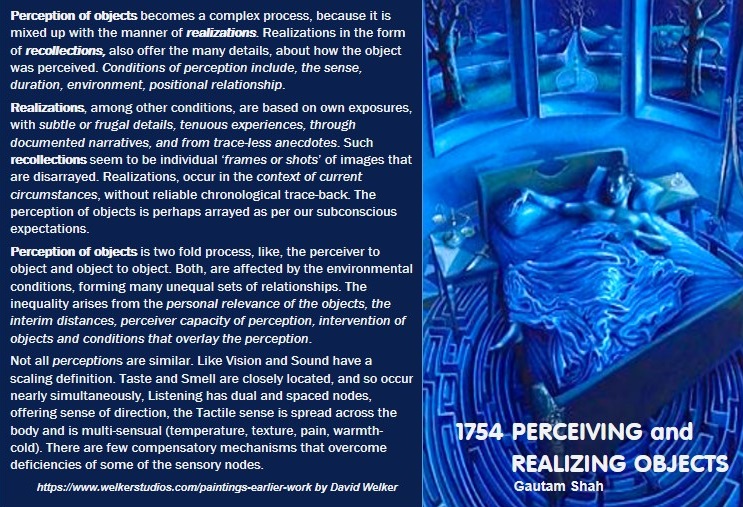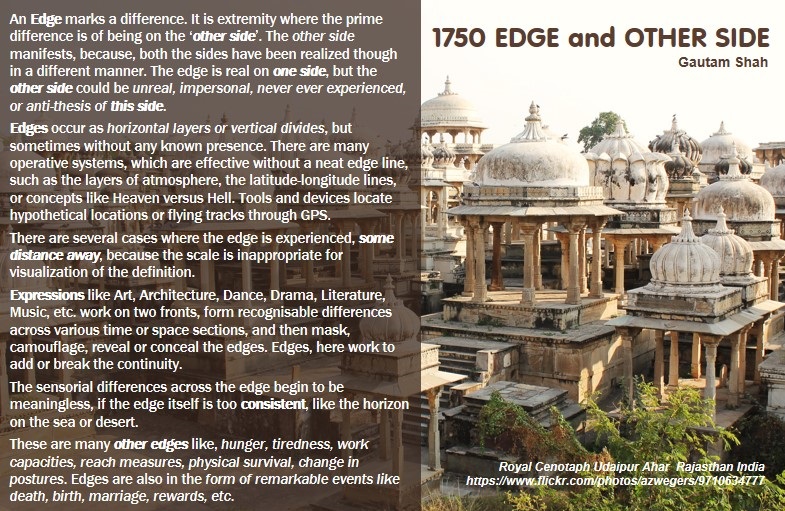1759 PATTERN RECOGNITION and REALIZATION -Gautam Shah
Patterns are complex sets that are instantly recognized or realized on hindsight. Patterns recognition depends on proximity, familiarity and relevance. The relevance is a cognised derivative and so usually irrecognisable. Patterns emerge in all perceptions individually as well as collectively.
Patterns are of many types, often affected by the space ‘and-or’ time, in different proportions. Each perceived pattern, is characterized differently, Visual ones, have the spatial distancing, for Audio, it is the temporal occurrence, in case of Taste there is a strong concurrence of Smell, and for Tactile experience the closeness and corroboration of other feel-nodes are required.
Patterns are affected by the gravity and so, the direction. The size-scale, duration, context etc., are, other factors, to affect the complexities of patterns. Patterns have motifs, which may be a symbol, simile, or a pointer. Motifs are self-sustaining shapes, with potential for connection, for directional growth and spread.
Recognized and Realized patterns are prone to closure (a sense of completeness or finality), whatever is incomplete, disconnected or concealed, gets bridged, both really or virtually. This process can resolve forces that cause small systems.
Nikos Salingaros (1952) is a mathematician and polymath known for his work on complexity theory, and design philosophy. He considers, ‘regularity to be a key property of a pattern, whether the pattern is the external stimulus itself or some other percept residing in the mind of the perceiver.’
Wassily Kandinski, Painter. ‘A point can be considered to be a work of art, but a work of art need not be a pattern.’









